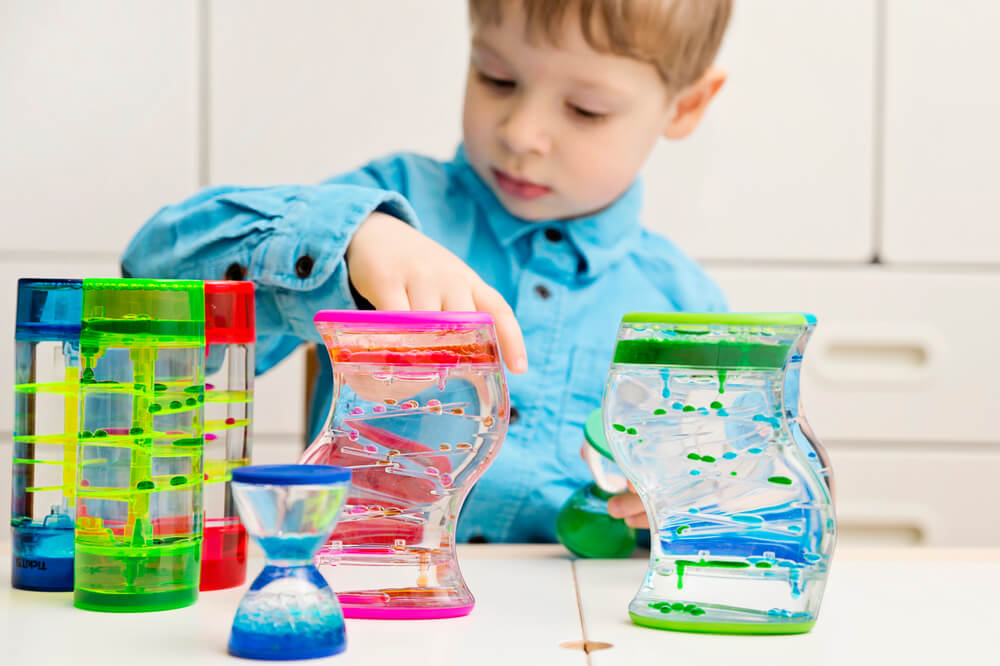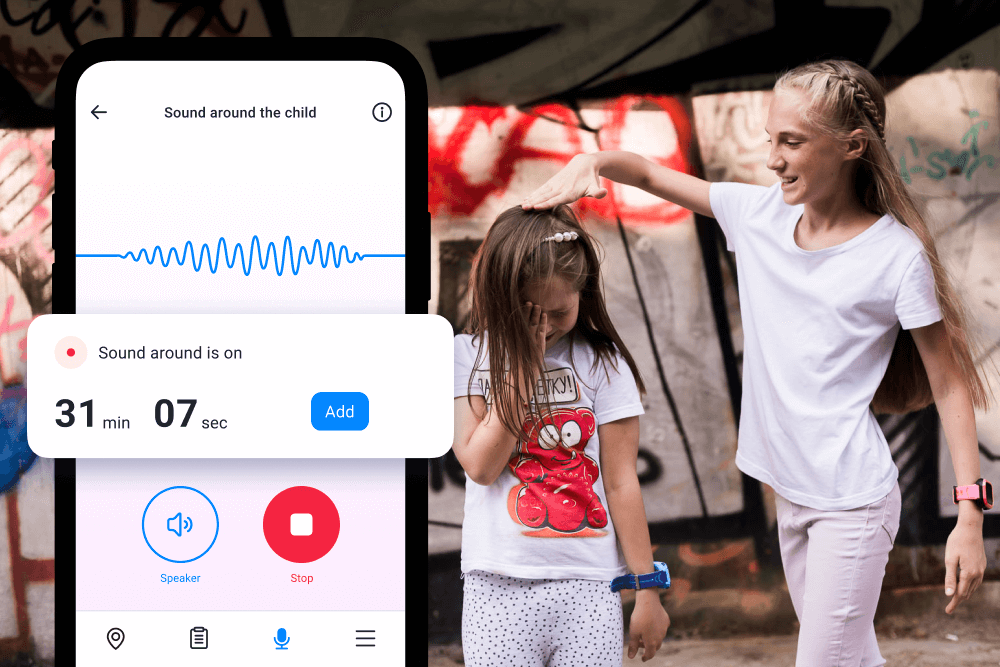How to Cure Autism at Home: Practical Approaches for Parents

Caring for a child with autism often involves adapting routines and incorporating home-based autism therapy into daily life. This approach allows parents to create a structured, familiar environment that supports their child’s unique needs. By implementing therapy at home, parents can reinforce learning in real-time, helping their child apply therapeutic strategies to everyday situations.
Contents:
- Why Choose an In-Home Therapy Program?
- What Kind of Autism Therapies Can I Do In-Home?
- Other At-Home Autism Therapy Techniques
- How the Findmykids App Can Make Living with an Autistic Child Easier
- Implementing Autism Therapy At Home
- FAQ
Why Choose an In-Home Therapy Program?

adriaticfoto/Shutterstock.com
Autism therapy at home comes with assorted advantages for both you and your child. First and foremost, it conveniently fits into your busy schedule. You have the liberty to decide on suitable therapy times, making it more manageable.
A familiar environment can play a significant role in your child’s progress. Home-based therapy occurs where your child feels safe, secure, and relaxed. They can easily express themselves there, an essential factor in effective treatment.
This therapy method also allows you to actively participate in your child’s therapeutic process. Rather than leaving your child in the care of others, you are right there, observing and participating. This involvement can boost the therapy’s effect and contribute to your understanding of your child’s unique needs.
In-home therapy can also help integrate therapeutic strategies into your child’s daily routine. This practice makes therapy more practical and relatable for your child. So, they can seamlessly carry over the essential skills taught during therapy into real-world situations.
What Kind of Autism Therapies Can I Do In-Home?
If you’re considering autism therapy at home, it’s important to know what types of therapies are effective and manageable to do. These autism therapies do not necessarily require a professional therapist and often use items and toys available in the home.
Applied Behavior Analysis (ABA)
Applied Behavior Analysis, or ABA, is a therapeutic method used to improve or change specific behaviors in children with autism. Essentially, ABA applies our understanding of how behavior works to practical situations. It breaks down complex skills into smaller tasks and uses positive reinforcement to encourage desired behaviors.
It’s all about encouraging positive actions and decreasing harmful behaviors. The beauty of ABA is that it can be tailored to each child’s unique needs and learning style.
It’s important to mention that ABA does not teach people with autism to mask their condition but teaches them tools to go through everyday life successfully.
By improving social skills, reading, academics, and communication, ABA aids children with autism in leading more independent lives. It’s been proven to work and is widely accepted among healthcare professionals.
So, how can you carry out ABA therapy at home? It’s easier than you might think.
- Start by identifying a behavior you want to encourage or discourage.
- Next, choose a reward that your child loves—this could be a favorite toy, a fun activity, or even a special treat.
- Break tasks into simple steps and provide clear instructions. Repeat several times.
- Reward your child immediately every time they display the desired behavior. With time, consistency, and patience, you’ll start seeing changes.
Remember, it’s a marathon, not a sprint. Providing a positive, engaging environment at home is essential in helping your child grow, learn, and thrive.
Relationship Development Intervention (RDI)

Sergey Novikov/Shutterstock.com
You may have heard about Relationship Development Intervention (RDI). It’s an autism therapy technique that helps enhance the social and emotional understanding of your child. The primary idea behind RDI is strengthening the bond between you and your child by encouraging interactive behavior.
The benefits of RDI are plenty. It helps autistic children better comprehend their surrounding environment and promotes flexibility in their thought processes. Importantly, it fosters emotional connectedness, fostering growth in their interpersonal skills.
Implementing RDI at home is a rewarding experience. It begins with simple activities like sharing a task or playing a game. However, it’s crucial to recognize that RDI isn’t a one-size-fits-all approach. Every child is unique—their experience with autism is unique. Therefore, personalizing the approach is key for fruitful outcomes.
Though you can start RDI at home, it’s recommended to work with a certified professional. They can guide you to set up practices tailored to your child’s needs. This collaboration ensures your child gets the maximum benefit from the exercises and promotes a nurturing home environment.
Parent-Child Interaction Therapy (PCIT)

Da Antipina/Shutterstock.com
Parent-Child Interaction Therapy (PCIT) is a powerful tool that can be utilized for children with autism aged between 2 to 6 years. Trained professionals endorse this therapy to assist children with their communication, social, sensory, and behavioral challenges.
PCIT incorporates two primary stages, aiming to increase positive parent-child relationships and manage problematic behaviors.
The first stage, Child Directed Interaction (CDI), aims to strengthen parenting skills by adhering to the child’s lead during their positive behavior. It’s simple to grasp and implement at home.
Simply engage with your child during their playtime or daily activities, offering positive feedback for their suitable behavior. You become a partner in your child’s world, fostering emotional security and boosting self-esteem.
Progressing to the second stage, Parent Directed Interaction (PDI), parents are encouraged to take charge during necessary occasions. It involves learning techniques for effectively managing defiant or harmful behaviors.
Practice active listening, use reflective language, and implement behavior management techniques learned during therapy.
Instruction on setting healthy boundaries and consistent, calm discipline offers an environment where your child can thrive and develop necessary life skills. This structured approach intends to provide clear expectations for your child, increasing their sense of security.
Implementing PCIT at home, you’d observe progressive improvements in your child’s social interactions and behavior. It helps establish a responsive and enriching environment for your precious one’s development and growth.
Other At-Home Autism Therapy Techniques
The autism therapy techniques mentioned above are certified therapies that have rigid practices. There are certifications parents can obtain before implementing these therapies with their autistic children.
Below are simpler yet effective autism therapies parents can practice at home to help their children develop necessary skills and navigate everyday life.
Play Therapy

Studio.G photography/Shutterstock.com
Play therapy, a widely used autism therapy offers a fun and engaging way to help your child hone their skills. The exciting part about this therapy is its focus on play, using activities kids naturally find enjoyable.
Through different types of games, play therapy helps children with autism improve their social and communication skills.
Play therapy has an array of benefits. The process aids children in expressing emotions, developing problem-solving abilities, and fostering healthier relationships.
Now, you might wonder how to introduce play therapy at home.
Start with identifying your child’s interests and tailor fun activities accordingly. Use toys that are not only entertaining but also aid learning.
Some effective Play therapy toys include:
- Play telephones
- Kitchen play sets
- Balance boards
- Learn how to dress games
- Playdoh
- Babydolls
Be observant of your child’s behaviors during playtime, allow the child to lead in play activities, and focus on skills such as turn-taking, recognizing emotions, and verbal communication.
Eventually, through consistent practice, you’ll notice growth and development in your child’s skill set, all in the comfort of your home.
Related: Toys for Autistic Kids: A Guide to Help Them Thrive.
Speech Therapy
Speech therapy method focuses on improving a child’s speech and abilities to understand and express language, including non-verbal communication. It can be immensely beneficial, helping your child communicate, express their needs, and interact with others more effectively.
Engaging in speech therapy at home can bolster the work of professional therapists, ensuring consistency and progress even outside of scheduled sessions.
- To try this, sit face-to-face with your child during playtime. This physical positioning allows your child to observe your mouth and face as you make sounds and form words, enhancing their understanding of speech patterns.
- Repeat sounds your child makes, and use visual aids, such as flashcards or picture books, to reinforce word learning. Remember, patience is paramount as progress may be slow, but each step counts.
Keep therapy sessions short and enjoyable to ensure your child remains engaged and motivated. Regularly provide positive reinforcement by praising your child for their effort and successes, no matter how small. This will stimulate further interest and effort from your child.
Floortime
Floortime is an effective method of autism therapy you can use in the comfort of your home. It centers on engaging your child in reciprocal interactions, whether verbal or nonverbal. By engaging your child in back-and-forth communication, you promote social, emotional, and intellectual abilities.
This approach needs about 20 minutes per session. It’s more about quality than quantity; you want your child to be fully invested in these interactions. Engage your child during their favorite activities, making it both fun and therapeutic.
Consider activities that your child enjoys and can share with you. Playing with toys, drawing pictures, or building blocks together are excellent starting points. Remember, express interest in what they’re doing and encourage them to respond to you, fostering a rewarding two-way communication.
The payoff for this method lies in improved communication skills, better emotional understanding, and stronger bonding with your child.
How the Findmykids App Can Make Living with an Autistic Child Easier
As a parent of a child on the autism spectrum, you want to teach them the necessary skills so they can go out on their own in the world. Sometimes, this means letting them practice doing things on their own while they are young.
Whether you let them walk to the neighbor’s house down the block or play in the park with friends, you can always know where they are and what they are doing with the Findmykids app.
Findmykids is a GPS locator app that allows parents to see where their children are at all times. Parents can set “safe zones” and be notified if their child leaves that area, such as school, playgrounds, or other activities.
If your child feels in danger, there is an SOS signal they can press to notify you immediately. You will see exactly where your child is and can rush to them for help.
As you teach your young one independence and responsibility, you can still keep an eye on them with the Findmykids app and worry less.
Implementing Autism Therapy At Home

Dzmitry Sarmont/Shutterstock.com
Embracing autism therapies at home, such as Relationship Development Intervention (RDI), Parent-Child Interaction Therapy (PCIT), and Floortime, can create a comfortable and constructive environment for your child.
These techniques, crafted to harmonize with your family’s routine, bolster your child’s communication skills and social development. They also strengthen your bond, instilling a sense of security and happiness in your child.
Remember, consistency is key in making these techniques effective. With patience and perseverance, you can make a significant difference in your child’s journey with autism.
Read also: Helping Your Autistic Child: A Guide for Parents.
FAQs
What are three treatments for autism?
There are three main autism treatments and therapy techniques: Applied Behavior Analysis (ABA), Parent-Child Interaction Therapy (PCIT), and Relationship Development Interaction (RDI).
What is the best therapy method for autism?
Each child and autism case is different. Therefore, there is no best therapy method for autism. It’s important to analyze your child’s strengths and what they need to improve. From this, you can find the best therapy method for your child’s autism.
The most effective autism therapy is the one that is done consistently and with dedication.
Can ABA therapy be done at home?
Yes, Applied Behavior Analysis (ABA) can be effectively done at home. You may consult a professional therapist for advice to get started. With guidance, parents can create an environment for children that supports learning and growth.
It’s also recommended to research and take courses to learn how to implement ABA with your child.
How can I treat my autistic child at home?
Professional therapists recommend a few home-based treatments for kids on the autism spectrum, including maintaining a consistent routine, engaging in simple games to develop social and motor skills, and providing positive reinforcement to encourage repetition. Maintaining a comfortable environment can also discourage maladaptive behavior.
What is the most effective therapy for autism?
Children with autism spectrum disorders tend to benefit most from therapies like applied behavior analysis (ABA), parent-child interaction therapy (PCIT), and relationship-development interaction (RDI). Any of these can work, depending on the child and his or her unique autism diagnosis, as long as you’re committed to implementing them.
What are self help skills for autism?
Self-help skills that are key for individuals with autism to develop include personal hygiene, daily living, social skills, and communication.
The picture on the front page: Eleonora_os/Shutterstock.com
Проверьте электронный ящик




















